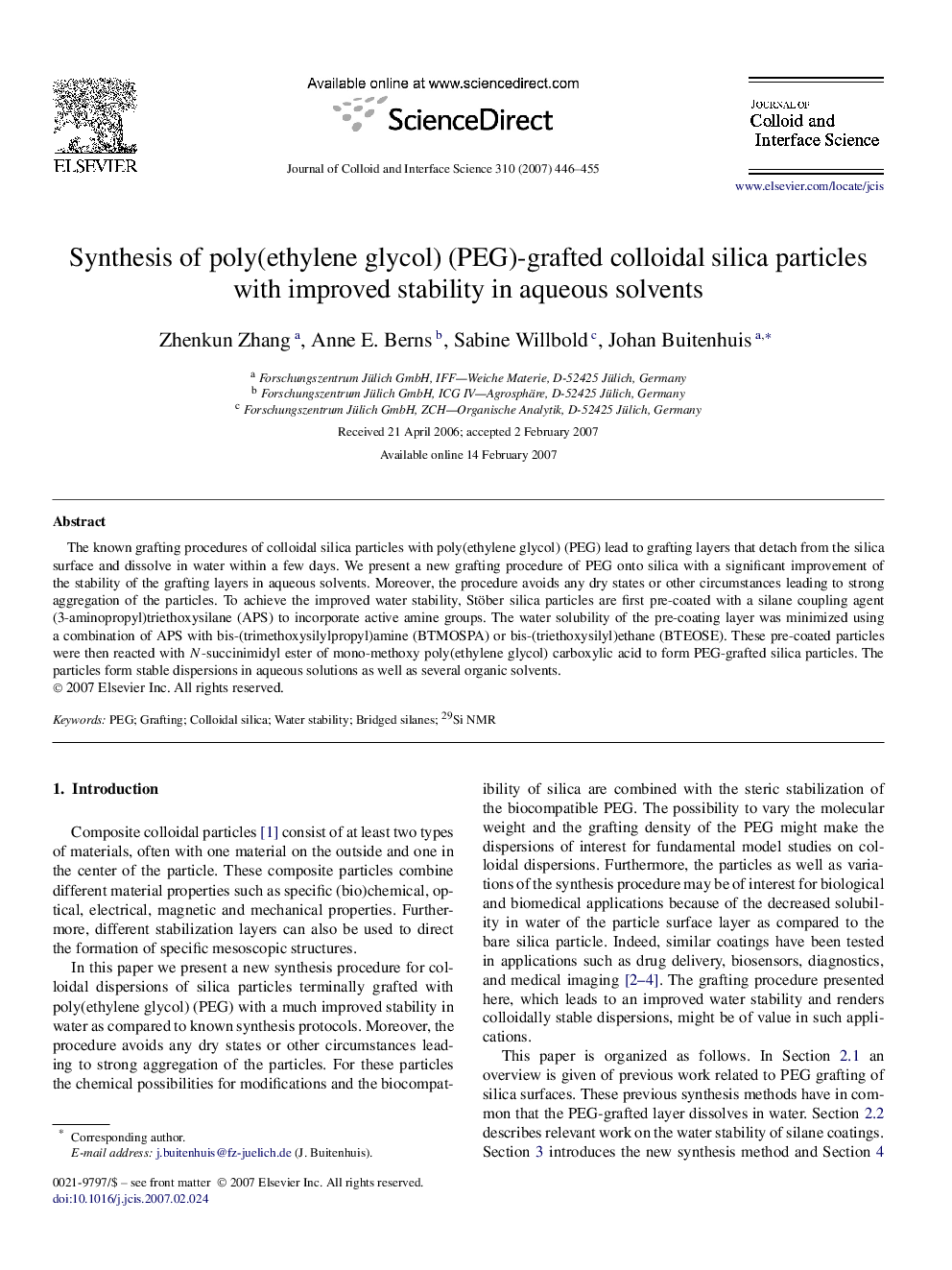| Article ID | Journal | Published Year | Pages | File Type |
|---|---|---|---|---|
| 612432 | Journal of Colloid and Interface Science | 2007 | 10 Pages |
The known grafting procedures of colloidal silica particles with poly(ethylene glycol) (PEG) lead to grafting layers that detach from the silica surface and dissolve in water within a few days. We present a new grafting procedure of PEG onto silica with a significant improvement of the stability of the grafting layers in aqueous solvents. Moreover, the procedure avoids any dry states or other circumstances leading to strong aggregation of the particles. To achieve the improved water stability, Stöber silica particles are first pre-coated with a silane coupling agent (3-aminopropyl)triethoxysilane (APS) to incorporate active amine groups. The water solubility of the pre-coating layer was minimized using a combination of APS with bis-(trimethoxysilylpropyl)amine (BTMOSPA) or bis-(triethoxysilyl)ethane (BTEOSE). These pre-coated particles were then reacted with N-succinimidyl ester of mono-methoxy poly(ethylene glycol) carboxylic acid to form PEG-grafted silica particles. The particles form stable dispersions in aqueous solutions as well as several organic solvents.
Graphical abstractColloidal silica particles were first pre-coated with a layer of low water solubility to obtain an improved water stability and then grafted with poly(ethylene glycol).Figure optionsDownload full-size imageDownload as PowerPoint slide
